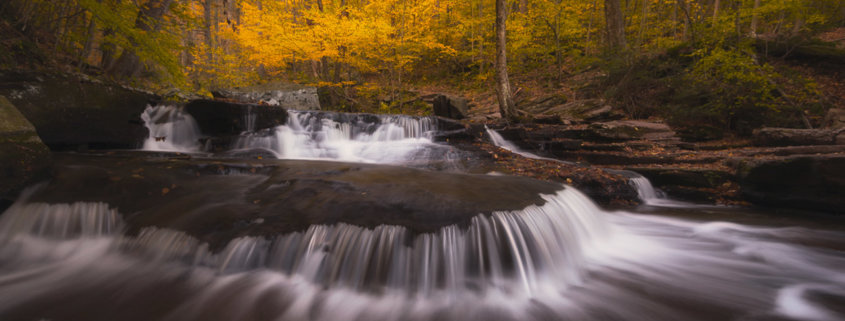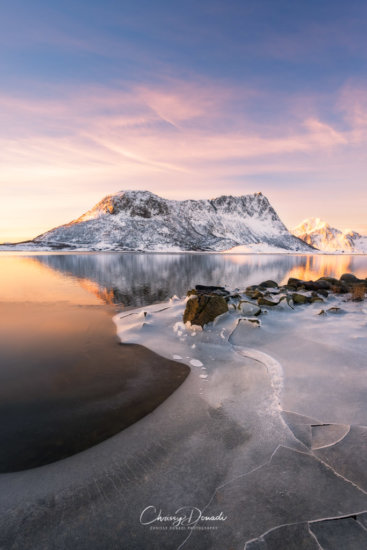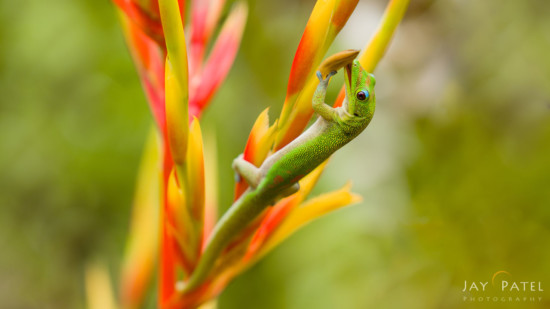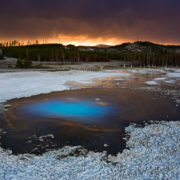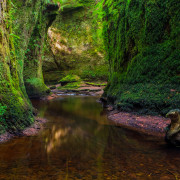How to Buy a Perfect Camera Lens for Nature Photography
Nature photography is a captivating and rewarding pursuit, allowing you to capture the beauty of the natural world in all its glory. Whether you’re photographing sweeping landscapes, intricate macro details, or elusive wildlife, the right camera lens can make all the difference. But with so many options available, how do you choose the best lens for your needs? In this comprehensive guide, we’ll explore the key factors to consider when purchasing a lens for nature photography, including maximum aperture, focal lengths, APS-C vs. full-frame lenses, brand name vs. third-party options, image stabilization, lens diameter, and more. This guide will help you understand what to look for when choosing the perfect camera lens for nature photography.
Know Your Camera Lens Needs, Not Your Wants
It’s easy to get caught up in the allure of high-end, expensive camera lenses with ultra-wide apertures and advanced features. However, understanding what you truly need is key to making a wise investment. Here are the primary factors to consider:
Understanding Maximum Aperture
The maximum aperture of a lens refers to the widest opening through which light can pass. It’s denoted by an f-number, such as f/2.8 or f/4. A lower f-number indicates a larger aperture, allowing more light to reach the camera sensor. This is particularly important in nature photography, where lighting conditions can vary dramatically.
- Low-Light Performance: A lens with a large maximum aperture (e.g., f/2.8) is ideal for shooting in low-light conditions, such as during sunrise, sunset, or in dense forests. It allows you to use faster shutter speeds, reducing the risk of motion blur.
- Depth of Field: A larger aperture also creates a shallower depth of field, which can be used to isolate your subject from the background. This is especially useful for wildlife photography, where you want to make your subject stand out against a blurred backdrop.
Choosing the Correct Focal Lengths
The focal length of a lens determines its angle of view and magnification. For nature photography, the ideal focal length depends on the type of subjects you plan to photograph.
- Wide-Angle Lenses (10-35mm): These lenses are perfect for capturing expansive landscapes, allowing you to include more of the scene in your frame. They’re also great for photographing large subjects, such as mountains or forests, from a close distance.
- Standard Lenses (35-70mm): Standard lenses offer a natural perspective, similar to what the human eye sees. They’re versatile and can be used for a variety of nature photography subjects, from landscapes to close-ups of flowers.
- Telephoto Lenses (70-300mm+): Telephoto lenses are essential for wildlife photography, as they allow you to capture distant subjects without disturbing them. They’re also useful for isolating specific elements in a landscape, such as a single tree or a distant mountain peak.
Lenses for APS-C (Crop) vs Full-Frame Cameras
The type of camera sensor you have determines which lenses will work best for you.
APS-C (Crop) Sensors
APS-C sensors are smaller than full-frame sensors, typically found in entry-level and mid-range DSLR and mirrorless cameras. When using an APS-C camera, the effective focal length of a lens is increased by a crop factor, usually around 1.5x or 1.6x.
- Advantages: APS-C cameras are generally more affordable and lighter than full-frame cameras. The crop factor can be beneficial for wildlife photography, as it effectively increases the reach of your telephoto lenses.
- Disadvantages: The smaller sensor size can result in lower image quality, particularly in low-light conditions. Additionally, wide-angle lenses will have a narrower field of view on an APS-C camera.
Full-Frame Sensors
Full-frame sensors are larger and offer better image quality, especially in low-light situations. They’re typically found in high-end DSLR and mirrorless cameras.
- Advantages: Full-frame cameras provide superior image quality, with better dynamic range and low-light performance. Wide-angle lenses retain their true focal length, making them ideal for landscape photography.
- Disadvantages: Full-frame cameras and lenses are generally more expensive and heavier than their APS-C counterparts. The lack of a crop factor means that telephoto lenses have less reach compared to APS-C cameras.
Can You Swap Full-Frame and APS-C Lenses?
Yes if the camera mount allow it, but with some limitations:
- Using a Full-Frame Lens on an APS-C Camera: Works well, but the crop factor increases the effective focal length (e.g., a 50mm full-frame lens acts like a 75mm or 80mm lens on an APS-C body). This is great for telephoto shots but not ideal if you need a wider field of view.
- Using an APS-C Lens on a Full-Frame Camera: Often results in heavy vignetting (dark edges), as APS-C lenses are designed for smaller sensors. Some full-frame cameras automatically switch to crop mode, reducing resolution but eliminating vignetting.
Brand Name or Third Party Lenses
Both brand-name (Canon, Nikon, Sony) and third-party lenses (Sigma, Tamron, Rokinon) offer excellent quality, but each has its pros and cons.
Brand Name Lenses
Brand name lenses, such as those from Canon, Nikon, Sony, and Fujifilm, are designed specifically for their respective camera systems. They often offer superior build quality, optical performance, and compatibility.
- Advantages: Brand name lenses are typically optimized for the camera’s autofocus system, ensuring fast and accurate focusing. They also tend to have better weather sealing, which is important for nature photography in challenging conditions.
- Disadvantages: Brand name lenses are usually more expensive than third-party options. Additionally, they may not be available for all camera systems.
Third-Party Lenses
Third-party lenses, such as those from Sigma, Tamron, and Tokina, offer a more affordable alternative to brand name lenses. They’re available for a wide range of camera systems and often provide excellent value for money.
- Advantages: Third-party lenses are generally more affordable than brand name lenses, making them accessible to a wider range of photographers. Many third-party lenses offer comparable optical performance to brand name lenses, with some even surpassing them in certain areas.
- Disadvantages: Third-party lenses may not have the same level of build quality or weather sealing as brand name lenses. Additionally, autofocus performance can vary, and some lenses may not be fully compatible with all camera features.
Making the Choice
Brand-name lenses typically provide better camera-body integration, faster autofocus, and longer durability, but they come at a higher price. Third-party lenses, on the other hand, can offer unique focal lengths and competitive image quality at a more affordable price point, though compatibility and firmware updates may occasionally be an issue. Consider testing lenses before purchasing to determine which best fits your needs.
Image Stabilization
Image stabilization (IS) is a feature that helps reduce camera shake, resulting in sharper images, particularly when shooting handheld or in low-light conditions. There are two main types of image stabilization:
- Lens-Based (Optical) IS: This type of stabilization is built into the lens and compensates for camera shake by moving lens elements. It’s particularly effective for telephoto lenses, where even slight movements can result in blurry images.
- In-Body IS: Some cameras have image stabilization built into the camera body, which works with any lens. This is particularly useful for photographers who use a variety of lenses, as it eliminates the need for stabilization in each lens.
When to Use Image Stabilization
- Handheld Shooting: Image stabilization is essential when shooting handheld, especially with telephoto lenses or in low-light conditions. It allows you to use slower shutter speeds without introducing camera shake.
- Tripod Shooting: When using a tripod, it’s generally recommended to turn off image stabilization, as it can introduce slight movements that reduce image sharpness.
Choosing a Lens with Image Stabilization
If you frequently shoot handheld or in low-light conditions, consider investing in a lens with image stabilization. While it may add to the cost, the benefits in terms of image quality and versatility are often worth it.
Lens Diameter and Photography Filters
The diameter of a lens determines the size of filters that can be used with it. Common filter sizes include 52mm, 67mm, 77mm, and 82mm. Filters are an essential accessory for nature photography, allowing you to control light and enhance your images. Some of the most commonly used filters include:
- Polarizing Filters: These filters reduce reflections and enhance colors, making them ideal for photographing water, foliage, and skies.
- Neutral Density (ND) Filters: ND filters reduce the amount of light entering the lens, allowing you to use slower shutter speeds or wider apertures in bright conditions. They’re particularly useful for creating motion blur in waterfalls or rivers.
- Graduated ND Filters: These filters are darker at the top and gradually become clear towards the bottom. They’re used to balance the exposure between the sky and the foreground in landscape photography.
Choosing the Right Filter Size
When selecting a lens, consider the filter size and whether you already own filters that are compatible. If you plan to use filters frequently, it may be worth investing in a lens with a standard filter size to avoid the need for multiple filter sets.
Try Before You Buy
Trying a lens before you buy is one of the best ways to ensure it meets your needs. Whether you rent, borrow, or test in-store, taking the time to evaluate the lens in real-world conditions will help you make an informed decision and avoid buyer’s remorse. This allows you to:
✔ Test how it performs in real-world conditions.
✔ Evaluate its weight and portability.
✔ Compare it with other lenses before deciding.
Many camera stores also have demo units available, so take advantage of that opportunity.
Which Lenses to Own vs. Which Ones to Rent
When building your photography kit, it’s important to strike a balance between owning essential lenses and renting specialized ones Owning a lens makes sense if it’s a versatile tool you’ll use frequently, while renting is ideal for niche or expensive lenses that you only need occasionally. For nature photography, consider owning a wide-angle lens (e.g., 16-35mm) for landscapes and a mid-range zoom lens (e.g., 24-70mm) for general-purpose shooting. These lenses are versatile and will likely be your go-to options for most scenarios. If you’re into wildlife photography, owning a telephoto lens (e.g., 70-200mm or 100-400mm) is a smart investment, as it’s a staple for capturing distant subjects.
However, ultra-specialized lenses like super-telephoto primes (e.g., 600mm f/4) or tilt-shift lenses for creative landscape work are better rented unless you use them regularly. Renting also allows you to test high-end lenses before committing to a purchase, ensuring you’re making a wise investment. By owning your core lenses and renting specialty ones, you can build a flexible and cost-effective kit that adapts to your evolving photography needs.
Conclusion
Choosing the best camera lens for nature photography requires careful consideration of your specific needs, including maximum aperture, focal lengths, sensor size, brand vs. third-party options, image stabilization, lens diameter, and filters. Choosing the best camera lens for nature photography involves balancing your budget, needs, and camera system. Start with versatile, high-quality lenses and expand your kit as your skills and interests evolve.
So take your time, do your research, and purchase a camera lens that will help you create images that inspire and captivate for years to come. Happy Shooting!

